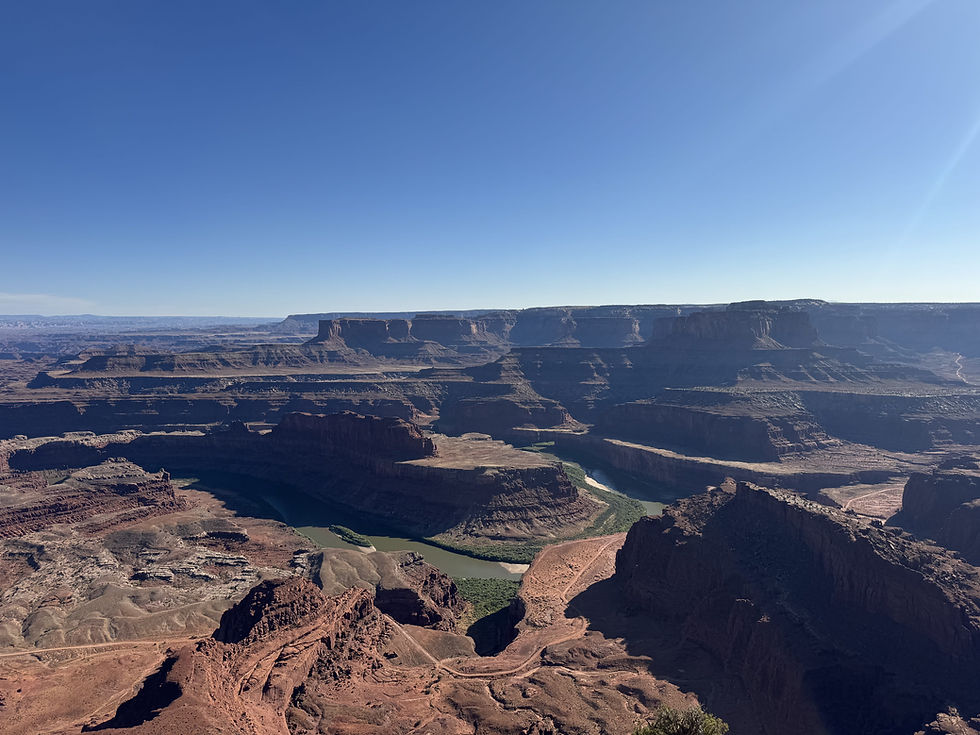Exploring Raystown Lake and Beyond: A Journey Through History, Nature, and Inspiration
- campsidephotos
- Aug 20
- 4 min read
Our stop at Raystown Lake in Pennsylvania turned into so much more than just a beautiful lakeside stay. This leg of the journey was filled with history, breathtaking architecture, and sobering reminders of the past. From national memorials to charming small towns, each stop gave us new perspective and appreciation for the stories that have shaped our country.
Friendship Hill
We started with Friendship Hill National Historic Site, the home of Albert Gallatin. Gallatin was a statesman, diplomat, and the longest-serving U.S. Secretary of the Treasury. He’s most famously remembered as the man who approved the Louisiana Purchase—an acquisition that nearly doubled the size of the United States. Walking through his estate, it was fascinating to imagine the decisions made here that would forever change the course of history.
Gettysburg
Our next stop was Gettysburg National Military Park, one of the most famous Civil War battlefields. To be honest, it was hard for me to truly visualize battles happening there—as I stood in those open fields, they just looked like big stretches of land. I couldn’t help but think that if I had been there during the war, I probably would have been shot dead instantly. Still, the weight of the history was undeniable, and the monuments scattered throughout serve as haunting reminders of sacrifice and courage.
Fort Necessity
From there, we explored Fort Necessity, where a young George Washington fought—and lost—his first battle. At the time, Washington was inexperienced and somewhat impulsive, and this defeat could have crushed him. But in hindsight, it was a loss that shaped him. The perspective here is powerful: failing young gave him lessons that helped him lead with wisdom and achieve greater victories later in life.
Flight 93 National Memorial
The Flight 93 National Memorial was one of the most moving stops of our journey. It honors the passengers and crew who took heroic action to prevent further tragedy on September 11, 2001. Standing at the memorial, looking at the wall of names, was a humbling and emotional experience that brought everything into perspective.

Eisenhower National Historic Site
We also visited the Eisenhower National Historic Site, which gave us a more personal glimpse into the life of President Dwight D. Eisenhower. Beyond his leadership during World War II and as President, it was grounding to see his home, farm, and the simple space where such an influential figure found peace.
Allegheny Portage Railroad
The Allegheny Portage Railroad National Historic Site taught us about one of the most important pieces of early American infrastructure. It was the first railroad to cross the Allegheny Mountains, an engineering marvel of its time. It opened the way for greater economic efficiency and commerce across Pennsylvania and beyond, laying the groundwork for progress before railroads advanced further.

Horseshoe Curve
From there, we went to Horseshoe Curve, another incredible feat of engineering. Horseshoe Curve was built as a replacement for the Allegheny Portage and became essential for improving economic efficiency. What’s even more fascinating is its role during World War II—German spies plotted to sabotage it because of its importance in moving troops and supplies. Thankfully, their plot was foiled, and the curve still stands today as both an engineering marvel and a symbol of resilience.

Altoona – America’s First Gas Station
In Altoona, we made a quirky but memorable stop at America’s first gas station. Now, this might not be a thrill for everyone, but my husband was absolutely delighted. For some reason, he loves gas stations—probably because of his smoking and trucking days, but also because, as he jokes, “the military runs on gas station taquitos and Red Bull.” Seeing him so happy at this spot made it a fun and personal highlight for us.

Fallingwater & Kentuck Knob
One of the most breathtaking experiences was visiting Fallingwater and Kentuck Knob, both designed by Frank Lloyd Wright. The integration of architecture with nature at Fallingwater was unlike anything we’d ever seen—literally a home built into a waterfall. Kentuck Knob was equally stunning with its unique design and sweeping views. Both homes left us in awe of Wright’s genius.


Johnstown Flood
The Johnstown Flood National Memorial was one of the most powerful stops of our journey. The museum exhibits brought the tragedy of 1889 to life in vivid detail. Learning about the dam’s collapse, the immense loss of life, and the devastation of an entire community was sobering. It wasn’t just a history lesson—it was an emotional reminder of the fragility of human structures and the resilience of people in the face of disaster.

Wrapping Up Raystown Lake & Beyond
Our stay at Raystown Lake became much more than just enjoying nature—it became a journey through America’s history, innovation, and resilience. From Albert Gallatin’s vision to Frank Lloyd Wright’s brilliance, from the tragedy of the Johnstown Flood to the heroism honored at Flight 93, this stop was a true reminder of the beauty and complexity of our nation’s story.





Comments